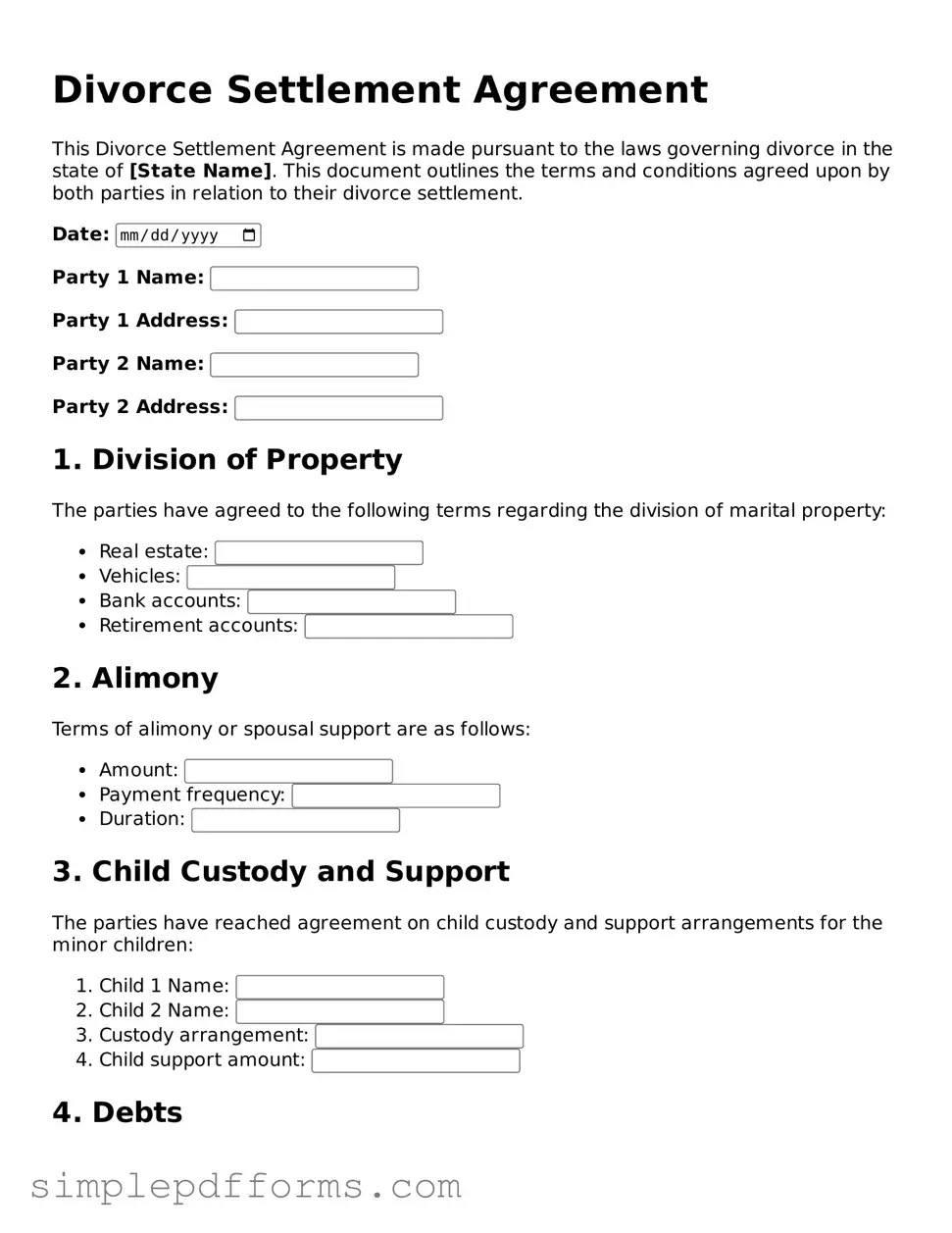Free Divorce Settlement Agreement Form
A Divorce Settlement Agreement form is a legal document that outlines the terms of a divorce between two parties. It addresses key issues such as asset division, child custody, and support obligations. This agreement serves as a crucial tool to ensure both parties understand their rights and responsibilities following the dissolution of their marriage.
Open Divorce Settlement Agreement Editor Now
